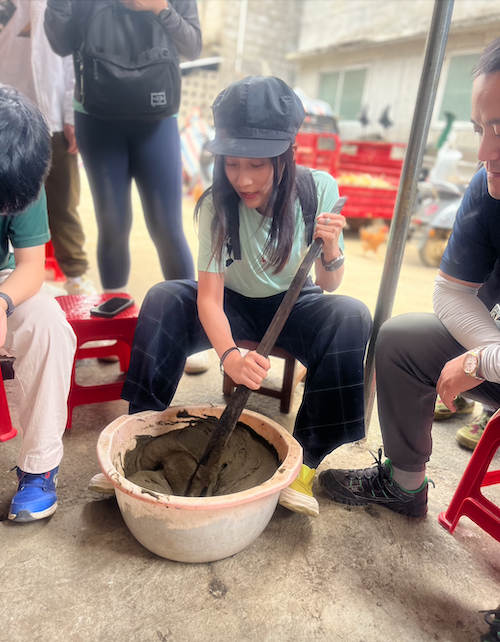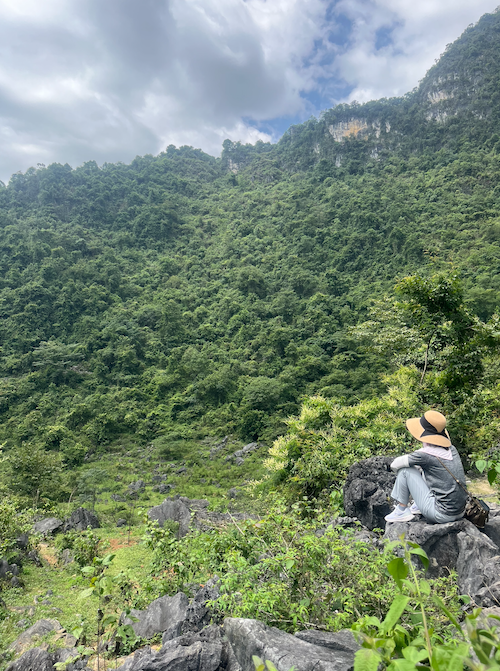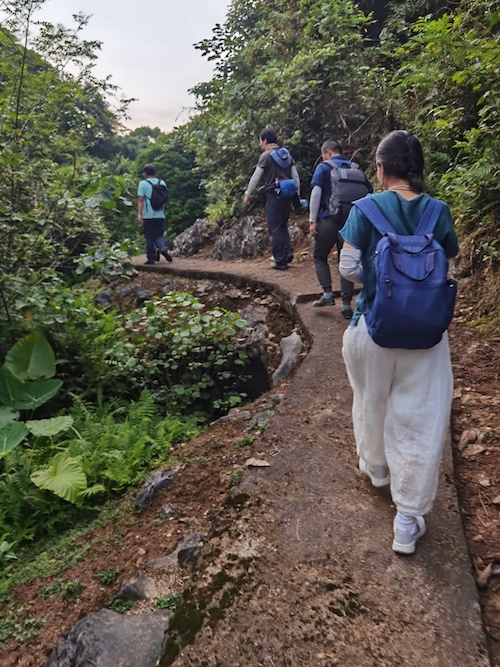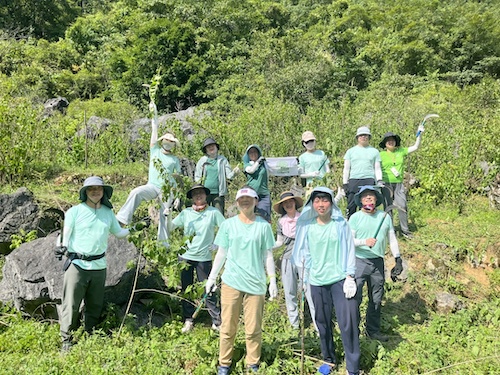2023 Shanghai Roots & Shoots Outstanding Volunteer Summer Camp
Nov.10.2023
Although the 2023 Shanghai Roots & Shoots Outstanding Volunteer Summer Camp has come to an end, there are a few unforgettable things that I encountered during the camp. First of all, I was deeply touched by the simple hospitality of the villagers in Tuoba Tun, Guangxi, where all the local fruits, be it dragon fruits, papayas, bananas or mangoes, were sufficient supply (all freshly plucked from the trees). In addition, during the afternoon bird-watching activity, the crowned hornbills and snake eagles, as if sensing our ardent desire, intermittent stayed, which was shocking.


It was also in the classroom of the Tuoba Tun Nuokaka Nature School that I heard lectures from Mr. Xia from the Shanghai Zoo on animal conservation education and from Mr. Shou from the Shanghai Cinnabar Botanical Garden on the taxonomy of plants. As a layman, I really gained a lot of knowledge. During the night tour, when I looked up, the bright starry sky was a rare spectacle for city dwellers.
I remember waking up early, in order to see the white-headed langurs foraging for food in the morning. Compared to the small and cramped space in the zoo, the vast mountains are their home. Through the guide, we learned that the white-headed langurs were once on the verge of extinction due to the “Wuape Wine”, but with nearly 40 years of scientific protection, their population has returned to more than 1,300.
The theme of this camp was “Ape”, and we had to talk about the main character, “Eastern Black-crowned Gibbon”, because it is critically endangered (there are only 130 or so left in the world), witnessing it is impossible, but there is still a glimmer of hope in hearing the ape’s call for yourself. I woke up at 4:00am again, and hiked up the mountain. The moment I heard the call of the apes, I was truly stirred up, and it was hard to describe. They chanted and sang for nearly half an hour, and we all listened to them to our heart’s content. On the way down the mountain under the leadership of Mr. Shou, all the way to the Shennong tasted all kinds of herbs, whether it is the fruits of the banyan tree, the southern sour date or the water donggao, the wild fruits along the roadside, tasted all over.


After eating lunch at the farmhouse, we went to villagers’ homes to experience making earth incense. Our group messed around for more than an hour, not to mention the quality and appearance of the finished product, if sold at the local price, we could not earn a few dollars. In the course of exchanges with the village cadres in Jingxi, we deeply felt the conflict between the urgency of protecting the eastern black crested gibbon and the backwardness of local economic development and villagers’ cognition. Planting trees for gibbons, restoring fragmented habitats and increasing habitat diversity are the most “cost-effective” conservation measures at this stage. However, with the current technology and experience, the survival rate of artificially planted saplings in karst landscapes is not satisfactory. Thinking about it, it is really “a long way to go, its cultivation far away”, and no matter how difficult the road ahead, we only have to “move forward”.
Yuanbing Wang





